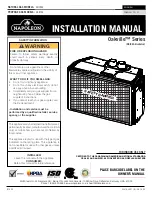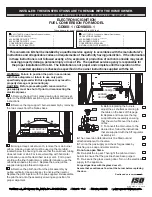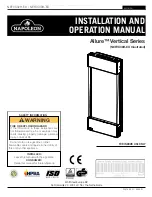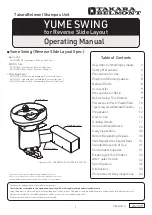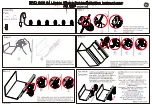
Ignition Module Test Procedure
GM • Ford • Chrysler • Toyota • Honda • Nissan
Important:
• This test checks for “dead” modules causing a no-start. This test will not
detect intermittent failures due to heat or engine vibration.
• Refer to vehicle service manual for module location, removal and installa-
tion procedures.
– Module access may require distributor removal. Follow service manual
procedures
– Check ignition timing with a timing light when the distributor is reinstalled.
• Always check the 9 volt battery in the tester (refer to page 1-4).
Testing Ignition Modules
3-2
Section 3
1) Locate module diagram on proceding pages.
2) Connect test leads as shown.
Begin with the Test 1 hook-up if more than one
test is shown.
Always make sure metal clips make good contact
and do not touch each other.
3) Set RANGE switch to LOW.
4) Set FUNCTION switch to FREQUENCY.
5) Observe PULSE light for test results.
• Flashing light means good module. (There may
be a short delay before flashing starts.)
• No flashing means bad module.
Note: The bottom TEST lights may also flash.
This is normal and may be ignored.
Exception: When testing “ring” type modules
(lower half, page 3-11), spin the distributor shaft
to activate the PULSE light. (Light on or flashing
during spin means good module.)
RANGE
HIGH
LOW
POWER OFF
FUNCTION
VOLTS
OHMS
FREQUENCY
PULSE
Summary of Contents for CP9087
Page 82: ...3 22 Notes...





































